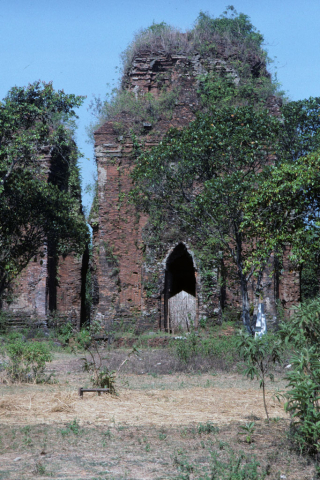
852094800
A damaged brick and stone Cham tower stands overgrown by vegetation in a rural area south of Hai An. Tall arched forms are characteristic of these monuments built by ethnic Chams between the seventh and twelfth century A.D.
Maritime trade between India and China led to the spread of Hindu and Buddhist ideas to many parts of coastal Southeast Asia during the first millennium A.D. Chams once ruled a Hindu kingdom called Champa whose influence extended through what is now southern Vietnam and Cambodia.
The Champa kingdom competed with the Hindu Khmer kingdom centered in Angkor (now in Cambodia) as well as with the Chinese-influenced people of northern Vietnam. Similar buildings dating from roughly the same time period and Indian influence can be seen in Cambodia as well as in Java and southern Sumatra, Indonesia where the Hindu-Buddhist kingdom of Srivijaya ruled by A.D. 700.
Chams, now relatively small ethnic minorities living in both Vietnam and Cambodia, speak an Austronesian language related to Malay, Indonesian, and Philippines languages. Like most other coastal Malays, they adopted Hindu practices before A.D. 1,000, but then turned towards Islam when trade and political patterns changed between A.D. 1500 and 2000. In Vietnam today, ethnic Chams are divided into separate Hindu and Muslim communities.
Creative Commons BY-NC-SA
 852094800
852094800